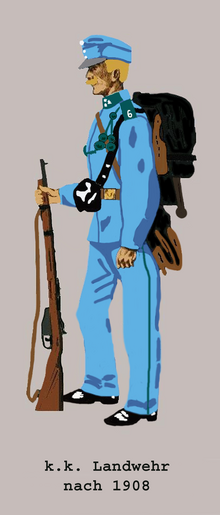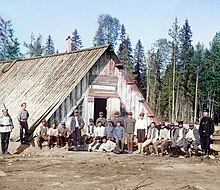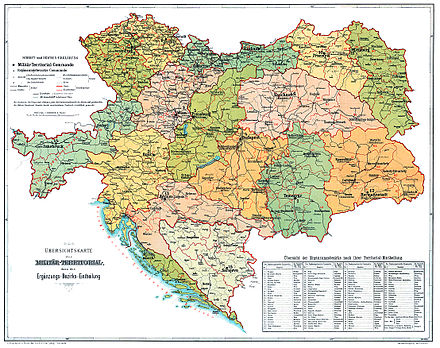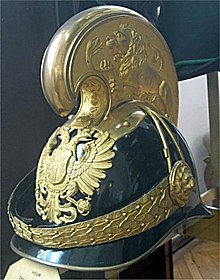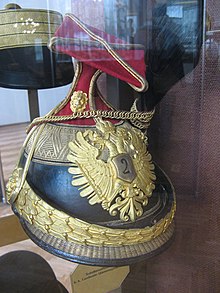Landwehr, or Landeswehr, is a German language term used in referring to certain national armies, or militias found in nineteenth- and early twentieth-century Europe. In different context it refers to large-scale, low-strength fortifications. In German, the word means "defence of the country"; but the term as applied to an insurrectional militia is very ancient, and lantveri are mentioned in Baluzii Capitularia, as quoted in Henry Hallam's Middle Ages, i. 262, 10th edition.

The Austrian Empire and its predecessor, the Archduchy of Austria, was one of the most prevalent states in Europe throughout its history. The following is Austria's military history from the 18th century.

The Serbian campaign was a series of military expeditions launched in 1914 and 1915 by the Central Powers against the Kingdom of Serbia during the First World War.
The 87th Infantry Division was a formation of the Imperial German Army in World War I. The division was formed in February 1915 as the provisional Dickhuth Corps, named after its commander, and became the 87th Infantry Division in August 1915. The division was disbanded in 1919 during the demobilization of the German Army after World War I.
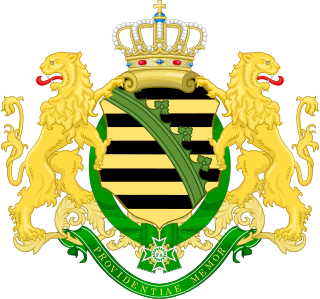
The Royal Saxon Army was the military force of the Electorate (1682–1807) and later the Kingdom of Saxony (1807–1918). A regular Saxon army was first established in 1682 and it continued to exist until the abolition of the German monarchies in 1918. With the formation of the Confederation of the Rhine by Napoleon the Royal Saxon Army joined the French "Grande Armée" along with 37 other German states.

The Austro-Hungarian Armed Forces or Imperial and Royal Armed Forces were the military forces of Austria-Hungary. It comprised two main branches: The Army (Landstreitkräfte) and the Navy (Kriegsmarine). Both of them organised their own aviation branches – the Army's Aviation Troops and the Navy's Naval Aviation. The Army in turn consisted of its own three branches: The Common Army, the Imperial-Royal Landwehr and the Royal Hungarian Honvéd.
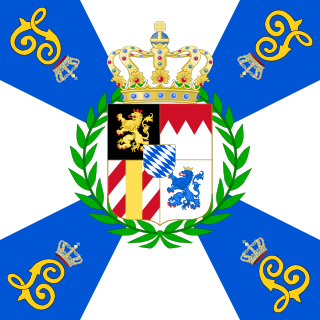
The Bavarian Army was the army of the Electorate (1682–1806) and then Kingdom (1806–1918) of Bavaria. It existed from 1682 as the standing army of Bavaria until the merger of the military sovereignty of Bavaria into that of the German State in 1919. The Bavarian Army was never comparable to the armies of the Great Powers of the 19th century, but it did provide the Wittelsbach dynasty with sufficient scope of action, in the context of effective alliance politics, to transform Bavaria from a territorially-disjointed small state to the second-largest state of the German Empire after Prussia.

The Royal Croatian Home Guard was the Croatian-Slavonian army section of the Royal Hungarian Landwehr, which existed from 1868 to 1918. The force was created by decree of the Croatian Parliament on December 5, 1868, as a result of the Croatian–Hungarian Settlement.

Paul Freiherr Puhallo von Brlog was a general of Austria-Hungary. During World War I, he commanded the Austro-Hungarian Army's 3rd and 1st Armies.
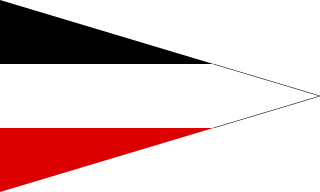
The 4th Cavalry Division was a unit of the German Army in World War I. The division was formed on the mobilization of the German Army in August 1914. The division was disbanded in 1919 during the demobilization of the German Army after World War I.
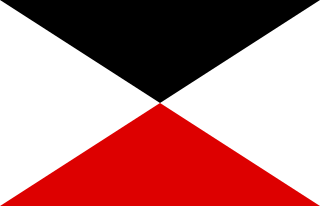
The Landwehr Corps was a corps level command of the German Army in World War I.
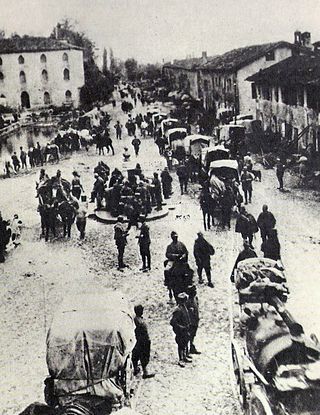
The Battle of Caporetto, took place from 24 October to 19 November 1917, near the town of Kobarid, on the Austro-Italian front of World War I. The battle was named after the Italian name of the town of Kobarid.

Together with the Dragoons and Uhlans, the Imperial and Royal Hussars, made up the cavalry of the Austro-Hungarian Army from 1867 to 1918, both in the Common Army and in the Hungarian Landwehr, where they were known as the Royal Hungarian Hussars.

The Common Army as it was officially designated by the Imperial and Royal Military Administration, was the largest part of the Austro-Hungarian land forces from 1867 to 1914, the other two elements being the Imperial-Royal Landwehr and the Royal Hungarian Honvéd. However, it was simply known as the Army (Heer) by the Emperor and in peacetime laws, and, after 1918, colloquially called the k.u.k. Armee.

The Imperial-Royal Landwehr, also called the Austrian Landwehr, was the territorial army of the Cisleithanian or Austrian half of the Austro-Hungarian Empire from 1869 to 1918. Its counterpart was the Royal Hungarian Landwehr. The two Landwehrs, together with the Common Army and the Imperial and Royal Navy, made up the armed forces of Austria-Hungary. While the name, "Imperial-Royal", might seem to suggest a link between the "Imperial" (Cisleithanian) and "Royal" halves of the Empire, in this context "Royal" actually refers to the Kingdom of Bohemia - not a sovereign kingdom on par with the Kingdom of Hungary, but a crownland of Cisleithanian Austria-Hungary and possession of the Habsburgs, who remained formally entitled to kingship. In this sense, the Kingdom of Bohemia was comparable in status to the Kingdom of Galicia and Lodomeria and the Kingdom of Dalmatia.
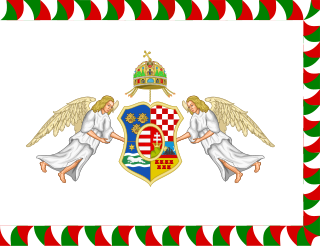
The Royal Hungarian Honvéd or Royal Hungarian Landwehr, commonly known as the Honvéd, was one of the four armed forces of Austria-Hungary from 1867 to 1918, along with the Austrian Landwehr, the Common Army and the Imperial and Royal Navy. The term honvéd was used to refer to all members of the Hungarian land forces in 1848-49, but it was also used to refer to enlisted private soldiers without a rank.

The Imperial-Royal Mountain Troops were founded in 1906 as part of the Austrian Landwehr, the territorial army of the Cisleithanian half of the Austro-Hungarian Empire. As a result, the abbreviation "k.k." was used and not "k.u.k." which would have implied a connexion with the Hungarian half of the Empire.
The Imperial and Royal Infantry was an arm of the Common Army of the Austro-Hungarian monarchy and comprised two elements:

Johann von Salis-Seewis also known as Johann Ulrich Graf von Salis-Seewis was an Austro-Hungarian military officer during World War I. Austrian Salis-Seewis commanded the Croatian 42nd Honvéd Infantry Division first as part of the unsuccessful Serbian Campaign of 1914 and then on the Carpathian Front. On his return, he became military commander of Vienna before serving as the first military governor of the Military General Governorate of Serbia during the Austro-Hungarian occupation. He later commanded the 92nd Landwehr Infantry Division during the Romanian campaign and headed the Supreme Command in occupied Romania. After the dissolution of the Austro–Hungarian monarchy, following its defeat in the war, Salis-Seewis settled in Croatia where he got involved with the Croatian fascist Ustaše.

Ludwig Goiginger was an Austro-Hungarian Lieutenant Field Marshal who notably served in World War I.

